第79章 The Revival of Antiquity Introductory (29)
Yet we should needlessly deprive ourselves of an enjoyment which is sometimes very great, if we threw aside everything in which classical mythology plays a more or less appropriate part.Here, as in painting and sculpture, art has often ennobled what is in itself purely conventional.The beginnings of parody are also to be found by lovers of that class of literature, e.g.in the Macaroneid-- to which the comic Feast of the Gods, by Giovanni Bellini, forms an early parallel.
Many, too, of the narrative poems in hexameters are merely exercises, or adaptations of histories in prose, which latter the reader will prefer, where he can find them.At last, everything-- every quarrel and every ceremony--came to be put into verse, and this even by the German humanists of the Reformation.and yet it would be unfair to attribute this to mere want of occupation, or to an excessive facility in stringing verses together.In Italy, at all events, it was rather due to an abundant sense of style, as is further proved by the mass of contemporary reports, histories, and even pamphlets, in the 'terza rima.' Just as Niccolo da Uzzano published his scheme for a new constitution, Machiavelli his view of the history of his own time, a third, the life of Savonarola, and a fourth the siege of Piombino by Alfonso the Great, in this difficult meter, in order to produce a stronger effect, so did many others feel the need of hexameters, in order to win their special public.What was then tolerated and demanded, in this shape, is best shown by the didactic poetry of the time.Its popularity in the fifteenth century is something astounding.
The most distinguished humanists were ready to celebrate in Latin hexameters the most commonplace, ridiculous, or disgusting themes, such as the making of gold, the game of chess, the management of silkworms, astrology, and venereal diseases _(morbus gallicus), _to say nothing of many long Italian poems of the same kind.Nowadays this class of poem is condemned unread, and how far, as a matter of fact, they are really worth the reading, we are unable to say.One thing is certain: epochs far above our own in the sense of beauty--the Renaissance and the Greco-Roman world--could not dispense with this form of poetry.It may be urged in reply, that it is not the lack of a sense of beauty, but the greater seriousness and the altered method of scientific treatment which renders the poetical form inappropriate, on which point it is unnecessary to enter.
One of these didactic works has been occasionally republished--the 'Zodiac of Life,' by Marcellus Palingenius (Pier Angelo Manzolli), a secret adherent of Protestantism at Ferrara, written about 1528.With the loftiest.speculations on God, virtue, and immortality, the writer connects the discussion of many questions of practical life, and is, on this account, an authority of some weight in the history of morals.On the whole, however, his hi fruit of contrast, nor the 'burla,' for their subject; their aim is merely to give simple and elegant expression to wise sayings and pretty stories or fables.But if anything proves the great antiquity of the collection, it is precisely this absence of satire.For with the fourteenth century comes Dante, who, in the utterance of scorn, leaves all other poets in the world far behind, and who, if only on account of his great picture of the deceivers, must be called the chief master of colossal comedy.With Petrarch begin the collections of witty sayings after the pattern of Plutarch (Apophthegmata, etc.).
is no verbal imitation, in precisely the tone and style of the verses on Lesbia's sparrow.There are short poems of this sort, the date of which even a critic would be unable to fix, in the absence of positive evidence that they are works of the fifteenth and sixteenth centuries.
On the other hand, we can find scarcely an ode in the Sapphic or Alcaic meter, which does not clearly betray its modern origin.This is shown mostly by a rhetorical verbosity, rare in antiquity before the time of Statius, and by a singular want of the lyrical concentration which is indispensable to this style of poetry.Single passages in an ode, sometimes two or three strophes together, may look like an ancient fragment; but a longer extract will seldom keep this character throughout.And where it does so, as, for instance, in the fine Ode to Venus, by Andrea Navagero, it is easy to detect a simple paraphrase of ancient masterpieces.Some of the ode-writers take the saints for their subject, and invoke them in verses tastefully modelled after the pattern of analogous odes of Horace and Catullus.This is the manner of Navagero, in the Ode to the Archangel Gabriel, and particularly of Sannazaro, who goes still further in his appropriation of pagan sentiment.He celebrates above all his patron saint, whose chapel was attached to his lovely villa on the shores of Posilippo, 'there where the waves of the sea drink up the stream from the rocks, and surge against the walls of the little sanctuary.' His delight is in the annual feast of St.Nazzaro, and the branches and garlands with which t_e chapel is hung on this day seem to him like sacrificial gifts.Full of sorrow, and far off in exile, at St.Nazaire, on the banks of the Loire, with the banished Federigo of Aragon, he brings wreaths of box and oak leaves to his patron saint on the same anniversary, thinking of former years, when all the youth of Posilippo used to come forth to greet him on flower-hung boats, and praying that he may return home.